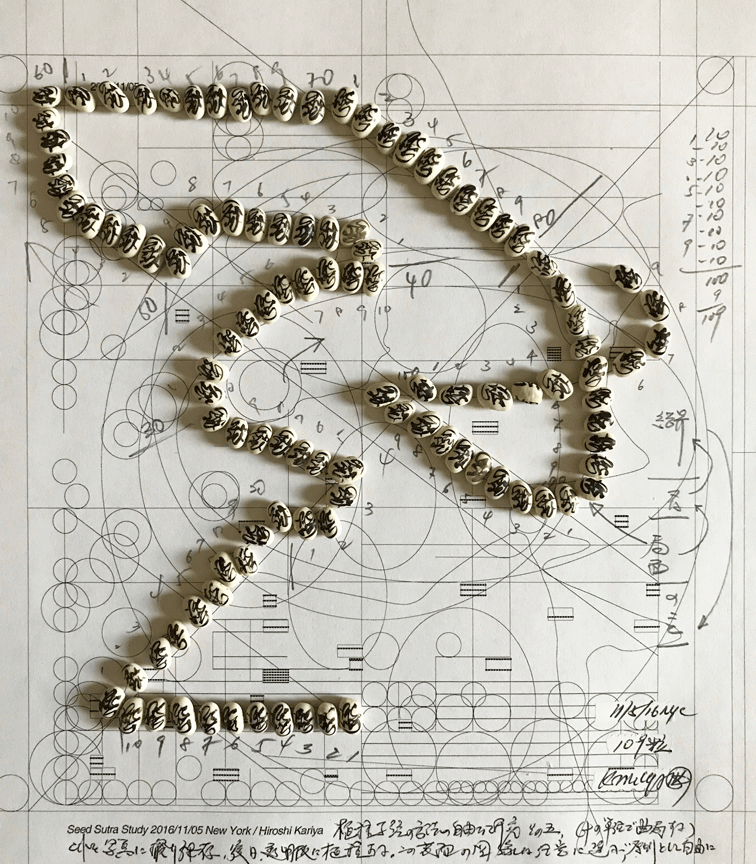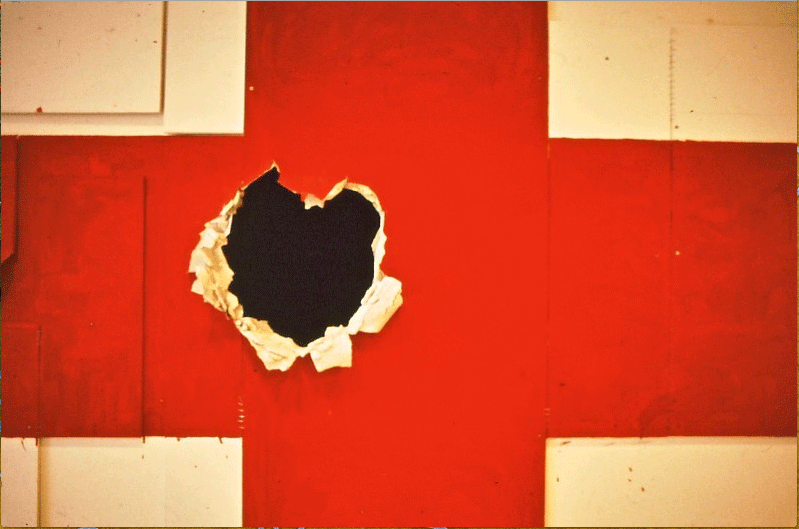Contemplating, Creation, Rebirth
Article/ The Philadelphia Inquirer, newspaper, 3.18, 1990 The task that Hiroshi Kariya has set for himself is daunting- to express through art the unity of all people, places and things in the universe throughout the eons that the universe has existed. He has confronted this task for 13 years with the compulsive steadfastness of an Eastern mystic. Kariya’s art is not concerned with object-making. It attempts to stimulate in the observer a higher consciousness akin to a state of grace, and if you sit with his work for a while, you begin to sense that this is far from an outstanding objective. To recognize that objective, one needs at least a vague understanding of the philosophy of Kariya, who was born in Japan but who has lived in the United States since 1977. The best introduction to it is the wall text he has composed for his tripartite installation at the Institute of Contempora
ry Art at the University of Pennsylvania, as part of the ICA’s ongoing “Investigations” series. The installation, which will continue through April 25, is called Sutra: One Thing in Everything, Everything in One Thing. The text, hand-printed on the wall in ink, introduces the section that occupies the upper gallery. It reads as follows: ABANDONED, BURIED, BURNT, AND/OR LOST In addition to the work being shown, there exists, somewhere in this universe, the work that I abandoned, buried, burned, and/or lost, which is not visible here. In Japan, Sutra writing is occasionally performed as a mass for the dead, a prayer for the recovery of sickly person, or as a prayer for a wish to be granted. The writers sacrifice their spirit and time for the sake of fulfilling their true wish. They commit themselves to spending a certain period of time while making an endeavor toward a certain amount of work. Sometimes a sutra is made by means other than writing. It may take the form of a silent prayer or action that is consciously repeated to obtain what is being focused upon. Some works are buried underground- for that which is nature’s return to nature, the universal system. Another reason is a message for the future. It is their undeniable knowledge to resurface and be recalled. Once every year, usually at the beginning of the year, some of these writings are gathered and burned to ashes of holiness. Thus, they receive a new beginning, a new life, and are reborn. They celebrate the incessant resurrection of nature. Hiroshi Kariya 1990 The key concepts in this passage are sutra and rebirth, the foundation of all three parts of Kariya’s installation. In Indian philosophy, a Sutra (from the Sanskrit word for thread) is a compilation of rules or principles that governs a particular aspect of life, For example, Kama sutra, the one most familiar to Westerners, codifies the conventions of physical love. Kariya adapts the concept as a group of words that conveys a fundamental idea about the world in a way that transcends time and place. The sutra underlying Kariya’s work, which he has written on various objects thousands of times since 1977, is “is the now”. To him, this inelegant phrase represents the immediacy of creation, and for him the act of creating is more important than the thing created. Kariya also believes that the material world is a continuum, that nothing is ever irrevocably destroyed, that the present can speak to the future just as the past speaks to the present, and that nature should be respected. Rebirth, which the installation expresses more prosaically as recycling, is a concept to be honored and encouraged. For Kariya, the installation represents a prolonged act of meditation on immortality. It is a contemplative work constructed with humble materials such as rocks, beans and driftwood, which have been energized through repetitive sutra inscriptions in ink and paint. The easiest part of the installation for an observer to grasp is Memory Wall, which occupies the west wall of the lower gallery. Memory Wall expresses the idea of rebirth literally; It’s constructed of the framing lumber and sheetrock that were used for the previous installation in the gallery, by Russian artist Ilya Kabakov.
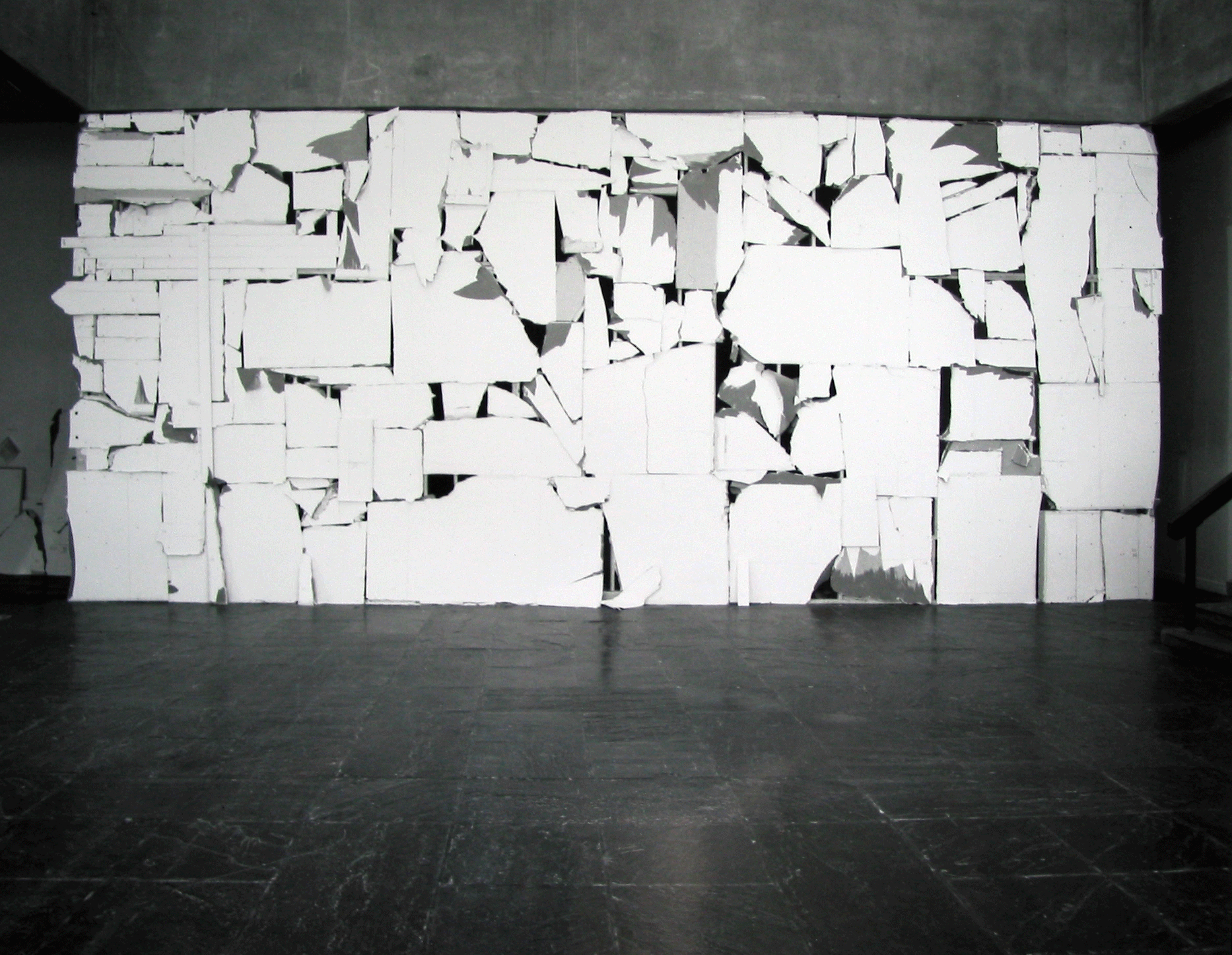
Kabakov’s installation consisted of a sheetrock wall that covered the south end of the lower gallery and a free-standing U-shaped wall in the center of the room. Kariya demolished these walls, but before he did, he sectioned them with chalklines into grids and marked with an identifying letter and number, much as archaeologists mark out a dig site.


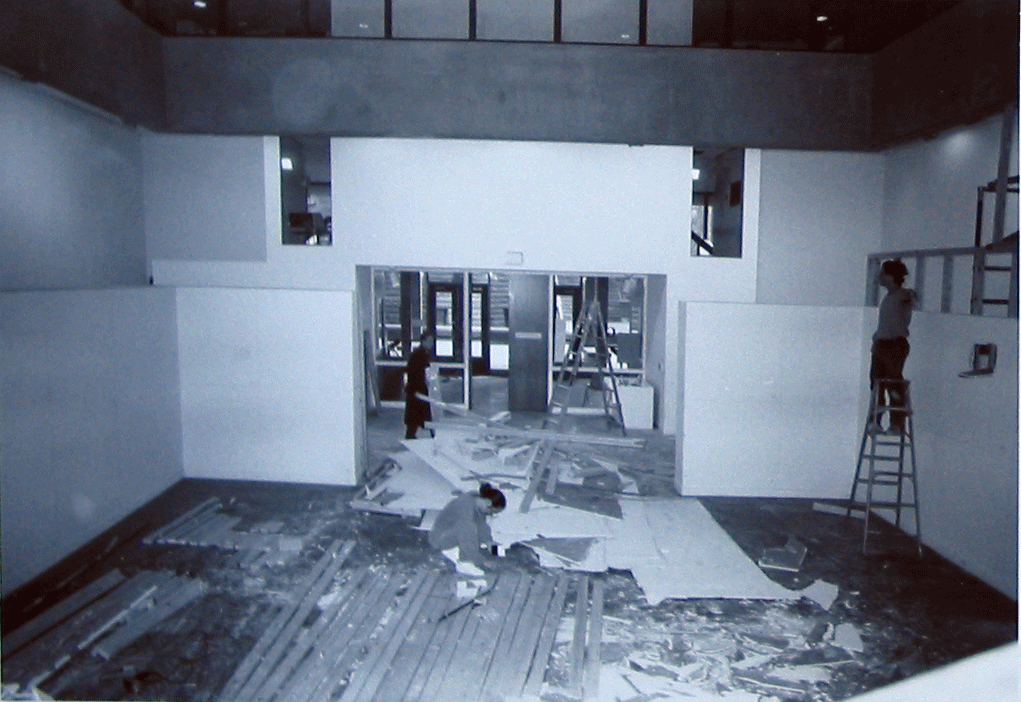

Kariya then assembled some of the larger chunks of the demolished Kabakov walls into a new, irregular wall. The leftover framing lumber is neatly stacked at the side, each piece numbered, and the debris, including even the dust from the demolition, is heaped behind it.
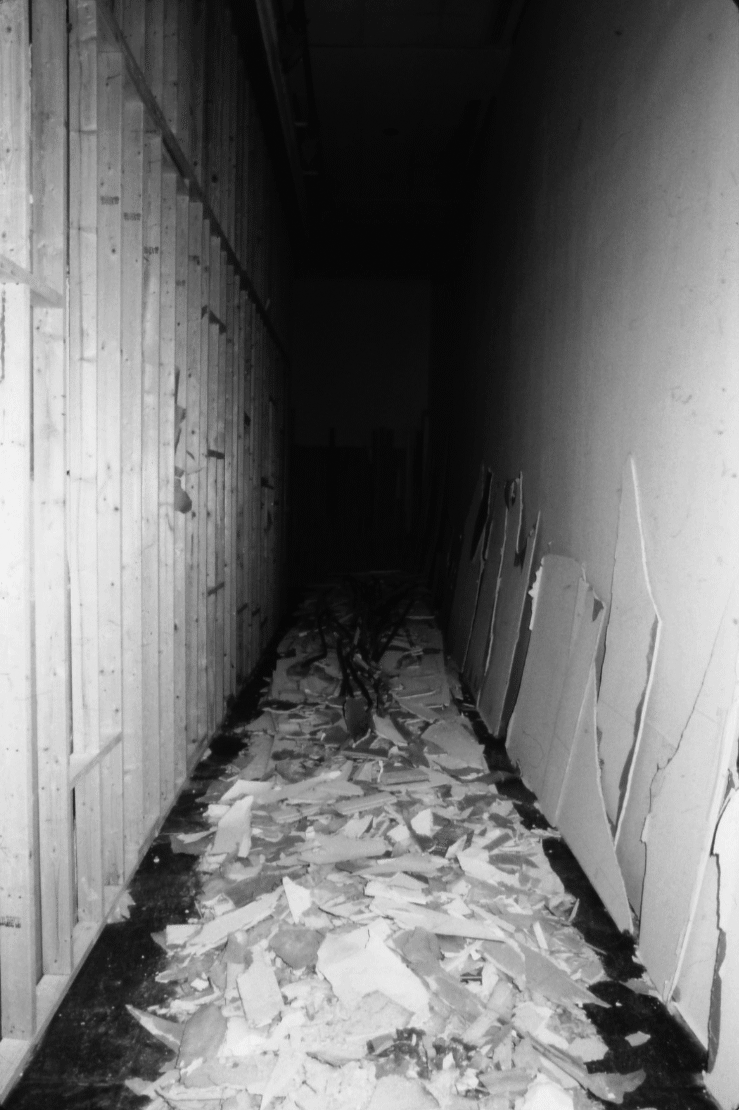
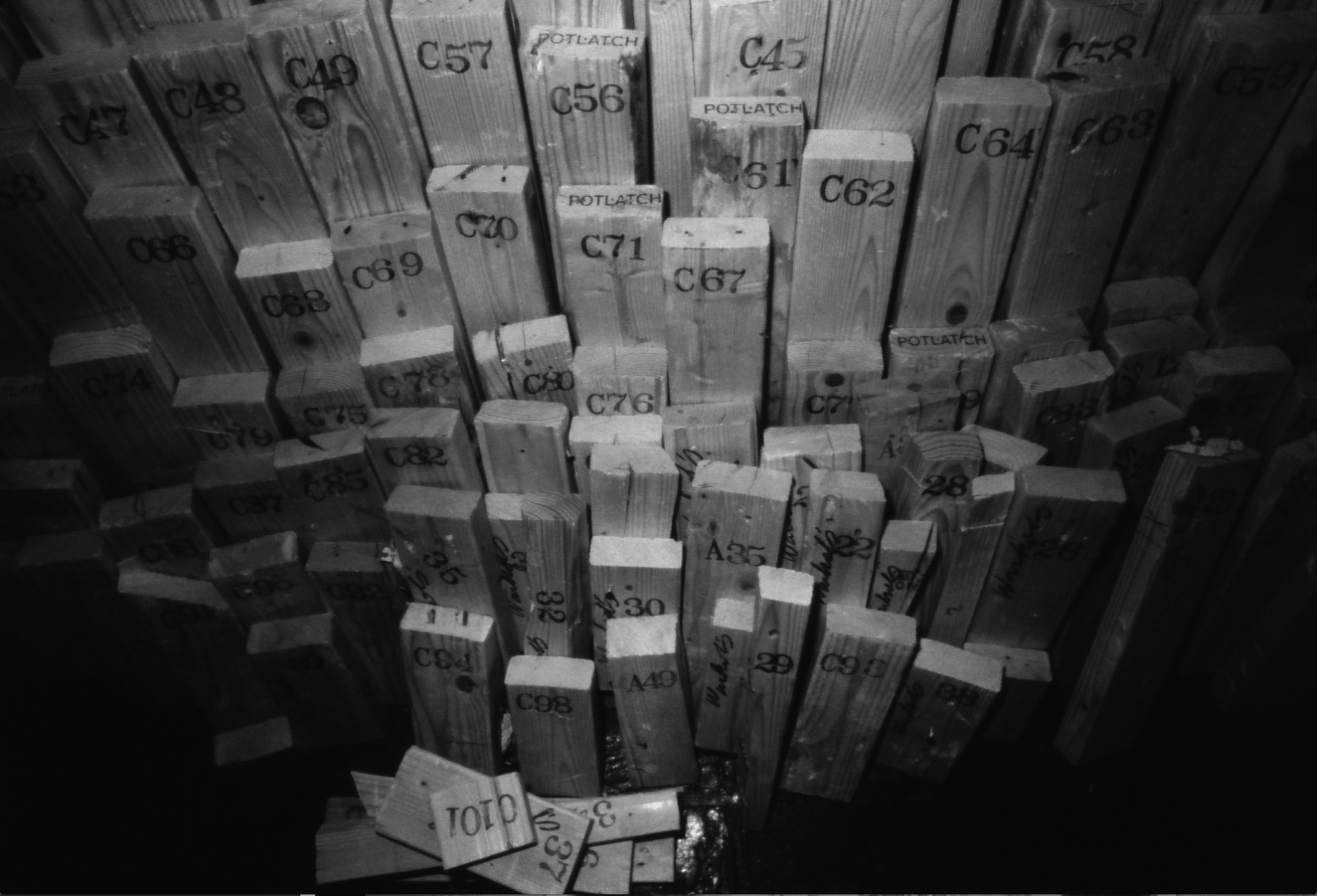
Simple as it is, Memory Wall embodies the idea of reincarnation with surprising eloquence. Its post-Kabakov codings testify to its former existence, and its deliberately ragged appearance reminds the observer that it honors the spirit of reincarnation more than material perfection. Andy Wahol’s memory wooden fragments (These fragment was revealed after demolition, used for Andy Wahol’s first Museum solo exhibition, according to John, installer's memory)
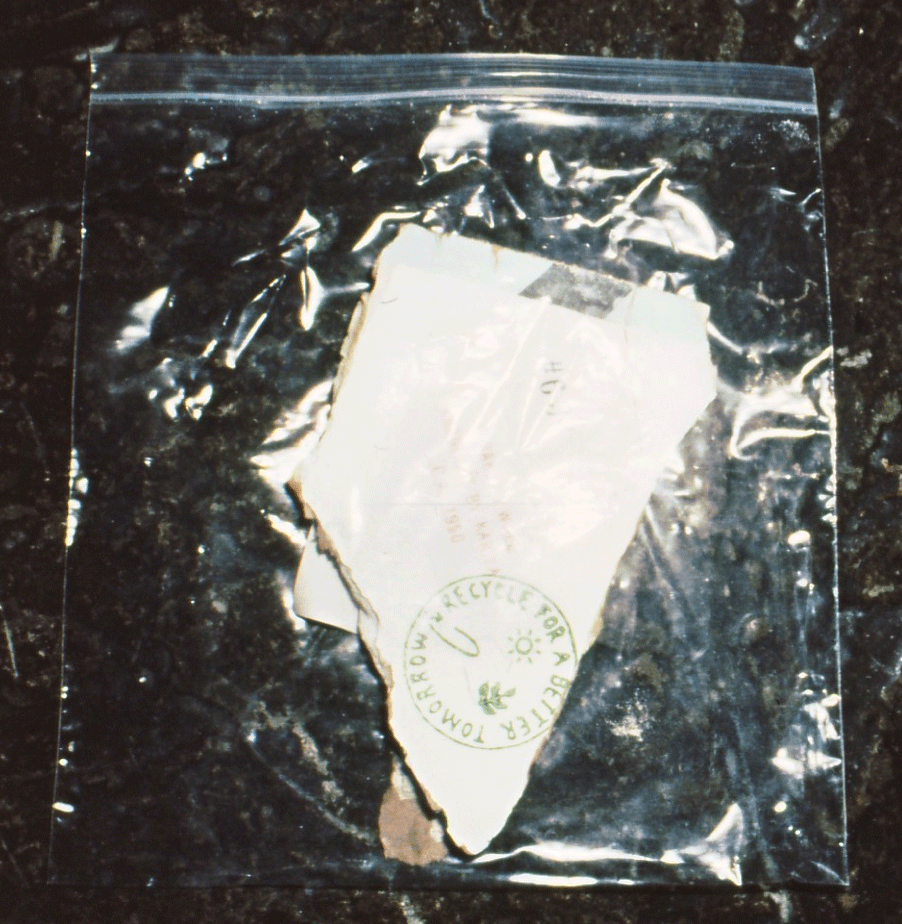
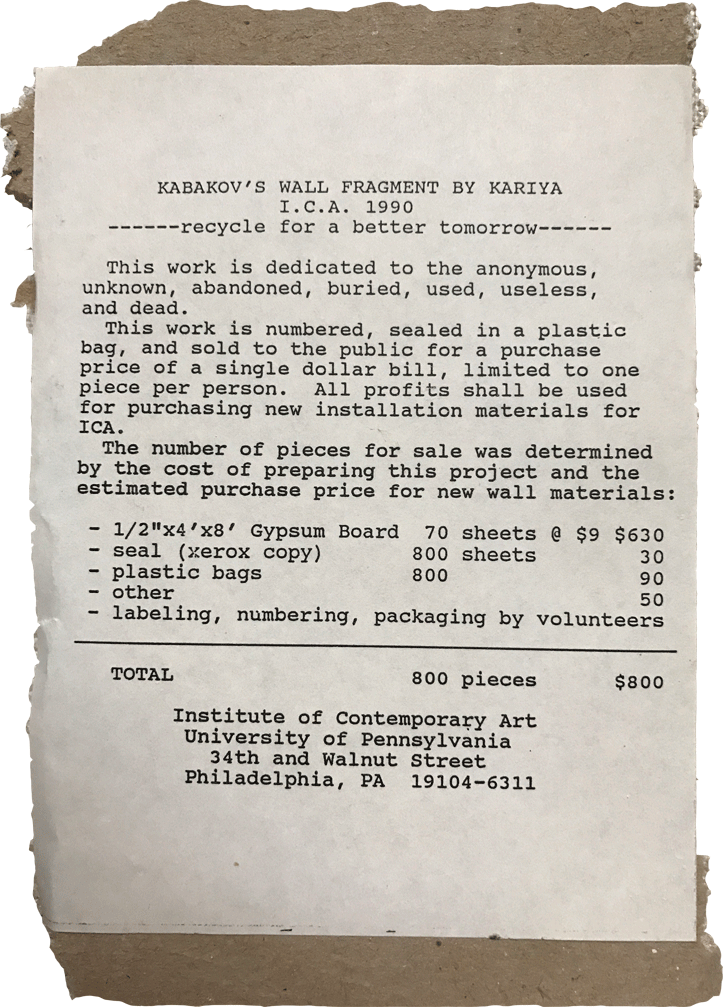

But it does have a practical aspect. Kariya has stamped and numbered 800 small pieces of sheetrock that the ICA will sell for a dollar each, with the proceeds to be used to recoup the cost of the Kbakov walls. On the opposite wall of the lower gallery, Kariya has installed a work-in-progress called 8000 Years Spring, 8000 Years Autumn. Forty-eight feet long by 8 feet high, it is made of pieces of used wood, each 2 feet long. The pieces are stacked on the wall in six rows. The stacks vary in height, and most of the wood is tinted green (for spring) or red and purple (for autumn). Most also are marked with a simulated script that represents Kariya’s “is the now” sutra. The sutra writing also covers a series of large scrolls open to various lengths on the floor in front of the wall.

The visual effect of the wall array is something like an abstract codex or calendar. One recognizes it as a record of time passed, but it also alludes to the rhythmic cadence of language. Because sutra writing is abstract-it vaguely resembles Arabic or Persian-it communicates metaphorically, but its incantatory purpose is clear. ...The most ritualistic aspect of the total installation, Sutra Tomb, occupies the upper gallery. Here, Kariya displays a panoply of sutra objects-wooden discs (on which his sutra is written continuously in a spiral), pieces of driftwood, rocks, small jars of paint, and miscellaneous objects such as candles, seashells, postcards, bones and small paper scrolls.

Some of these items are organized systematically on a sturdy, wooden free-standing shelf, while others are laid out on the floor behind it. The observer isn’t allowed to walk around or through the piece, so he or she experiences it as a succession of fragmented views.

To the left, a 20-foot-wide ring of 100 limestone fragments, each covered with sutra writing, circles through an adjacent gallery and links up with the central array; to the right, a ring of 100 piles of white beans, totaling about 100, a “grasp”
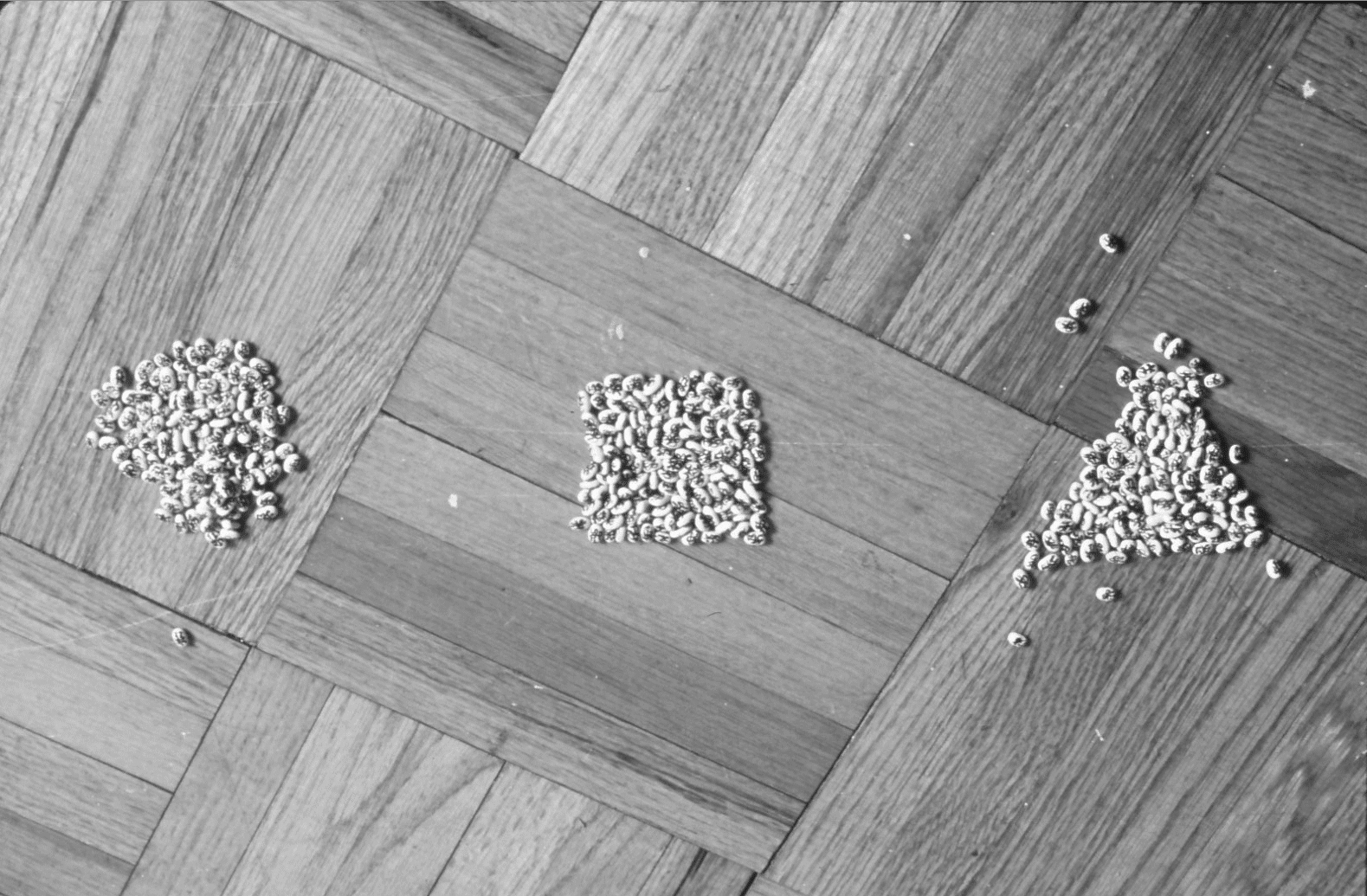

The arrangement does approximate an ancient burial chamber, where offerings are left to propitiate gods, but through the seeds it also implies dormancy and rebirth. Like 8000 Years, through, it cannot be deciphered by an outsider, nor do I think the artist intends that anyone should need to do so. Literal translation isn’t necessary; the spirit of the work is palpable from its form and constituent elements. If one were to come upon a similar display deep in a primeval forest or in a secluded mountain cave, as an artifact of a vanished civilization, one would understand its purpose intuitively. The most distinctive quality of Kariya’s work, aside from the patience and dedication it obviously demands, is that the process of making it-the “sacrifice” to which he refers in his wall text-is more consequential than the artifacts it produces. It is, in fact, its essence. By coming upon this installation after the artist has completed his labor (or at least interrupted it), the observer unfortunately misses the main event, which is the artist focusing intently on his task. This art isn’t intended as interpersonal communication; it describes a solitary, almost penitential search for communion with a cosmic unity. One judges the quality of such a quest much as one would evaluate a religious mission, by the artist’s persistence and dedication to his ideals. By this standard, Kariya has achieved the most meaningful goal to which art can aspire. Edward J. Sozanski, Philadelphia Inquirer, 3.18, 1990











